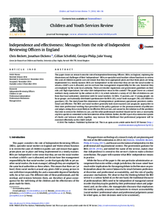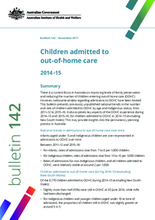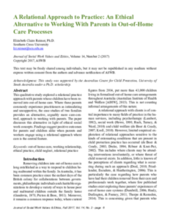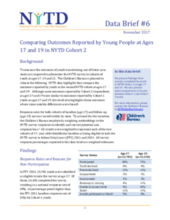Displaying 1471 - 1480 of 2214
The purpose of this study was to determine the proportion of school moves that can be reduced through implementation of the educational stability provisions of the Fostering Connections to Success and Increasing Adoptions Act (FCA, 2008) and the Every Student Succeeds Act (ESSA, 2015), and to identify opportunities to minimize the number of transitions that children and youth in foster care experience in the US.
This Opinion Piece traces the rise of statutory kinship care in Australia from the progressive reduction of residential care and the struggle to recruit sufficient foster carers to meet demand for protective care.
Concept mapping was used to identify the needs of grandparents who take care of their grandchildren in formal foster care in Flanders (Dutch speaking part of Belgium).
The paper draws on a mixed methods study the role and effectiveness of Independent Reviewing Officers in England.
The objectives of this study are to: use the methodology of a 2007 study to establish foster care minimum adequate rates for children (MARC) based on the child's age and geographical location in every state; update the MARC with cost of living adjustments to 2016; examine changes in gaps between the MARC and the current foster care rates; and identify states that have made increases to their reimbursement rates, relative to the MARC over time.
This study examined predictions of externalizing behaviors (EB) from childhood to adolescence/young adulthood from temperament, preadoption maltreatment, and adoptive family cohesion.
The objectives of this study are to: use the methodology of a 2007 study to establish foster care minimum adequate rates for children (MARC) based on the child's age and geographical location in every state; update the MARC with cost of living adjustments to 2016; examine changes in gaps between the MARC and the current foster care rates; and identify states that have made increases to their reimbursement rates, relative to the MARC over time.
This bulletin presents previously unpublished Australian national trends in the number and rate of children admitted to out-of-home-care by age and Indigenous status, from 2011–12 to 2015–16.
This qualitative study explored a relational practice approach with parents whose children have been removed into out-of-home care in Australia.
This data brief presents data highlights that compare the outcomes reported by youth in the second NYTD cohort at ages 17 and 19.




